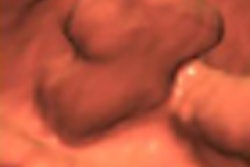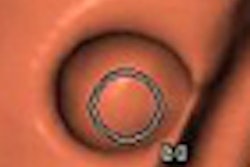Women receiving whole-breast radiation therapy after breast-conserving surgery should have two CT simulation exams for treatment planning -- the first prior to treatment planning and the second near the end of treatment prior to delivery of a small-field boost, according to an article in the November issue of the International Journal of Radiation Oncology, Biology, Physics.
Radiation oncologists from the University of Maryland School of Medicine found that the use of a second CT simulation may enable radiation dose to be more accurately administered, minimizing the volume of normal healthy tissue being irradiated. They made this recommendation after analyzing lumpectomy cavity volume dynamics and variability in a group of breast cancer patients prior to and during the last week of radiation treatments (Int J Radiat Oncol Biol Phys, 2009, Vol. 75:3, pp. 751-756).
The prospective study enrolled 43 women with 44 breast lesions who received treatment at the University of Maryland Medical Center in Baltimore and the Central Maryland Oncology Center in Columbia between January 2006 and August 2007. All had been diagnosed with invasive ductal carcinoma (22 lesions), ductal carcinoma in situ (21 lesions), or invasive lobular carcinoma (one lesion); had breast conservation surgery; and did not require chemotherapy. A mix of small to large lumpectomy cavity volumes were represented in both right (16 lesions) and left (28 lesions) breasts.
Each participant had a CT planning simulation exam within 60 days following surgery, and a second identical procedure after 21 to 23 whole-breast radiation treatments of 1.8 to 2.0 Gy fractions (45-50.4 Gy prescribed) using 6- to 18-MV photons. Based on images acquired from the second CT planning simulation, a small field boost of 10-16 Gy was delivered to the lumpectomy cavity using electrons or photons.
For each CT simulation, the researchers used two different types of contouring methods to measure the lumpectomy cavity volume. The first CT planning simulation was performed a median of 31 days following surgery, with radiation therapy treatments starting a median of 12 days later. The second CT exam was performed a median of 75 days following surgery, or 32 days after radiation treatments began.
The lumpectomy cavity volume decreased in 86% of the lesions and increased in 14%. The largest decrease was -226 cm3 and the largest increase was +9 cm3. The median volume at the time the first CT simulation was performed was 38.2 cm3 (range, 4.1-363.8 cm3), which declined a median of 16.5 cm3 (range, 4.7-164.6) at the time the second CT simulation was performed.
Patients with larger initial lumpectomy cavity volume were more likely to have a reduction in volume, as well as a greater magnitude of reduction between the first and second CT simulation, according to lead author Dr. Todd Flannery, a radiation oncology resident at the time.
Out of the total 38 lesions with decreased lumpectomy cavity volume:
- 27 lesions had a volume reduction of 25% or more, 23 of which were originally greater than 30 cm3
- 21 lesions had a volume reduction of 33% or more, 20 of which were originally greater than 30 cm3
- 11 lesions had a volume reduction of 50% or more; all were originally greater than 30 cm3
No correlation was identified between the number of days from surgery to the day either the first or second CT simulation was performed with respect to volume change or percent of change, nor was any correlation identified between the time to the start of radiation therapy treatments.
The authors emphasized that while a small-field boost has been shown in clinical trials to improve local control, the tradeoff can be worse cosmesis for patients and increased toxicity to normal tissue. By recontouring the lumpectomy cavity volume immediately before the small field boost is delivered, radiation exposure to the healthy breast, lung, heart, ribs, and nipple-areolar complex can potentially be reduced, especially for women with large lumpectomy cavities or cavities near critical structures.
By Cynthia E. Keen
AuntMinnie.com staff writer
November 10, 2009
Related Reading
IMRT reduces skin toxicity symptoms for breast cancer patients, July 20, 2009
Study reports link between breast toxicity and timing of rad therapy, November 17, 2008
Copyright © 2009 AuntMinnie.com




















